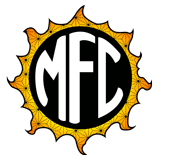For a city as world renown as the birthplace of Jazz and a Mecca for the blues, it can be easy to miss the fact that New Orleans also boasts a young, energetic, and constantly evolving modern music scene. In 2012, Dante DiPasquale and Reeves Price of Winter Circle Productions introduced the Buku Music + Art project to help draw attention to the city’s burgeoning rap, hip-hop, and the EDM scene. Three short years later, Buku has clearly been established as a new local institution and a force to be reckoned with.
As a direct counterpoint to the increasingly large and overwhelming “traditional” music festival, Buku remains comparatively intimate. Held on the grounds of “Mardi Gras World,” Buku makes excellent use of a truly unique setting with visual highlights that include a stage in a warehouse full of Mardi Gras floats and a giant graffiti art installment set against the industrialized backdrop of the Mississippi River.
This year, Buku weekend accommodated a large variety of tastes by showcasing nearly seventy rap, hip-hop, Indie, and EDM acts set across five stages (including the “VIP SS Blu-Ku,” a limited-admission stage set on a Mississippi riverboat). On Friday, legendary New York rapper Nas celebrated the 20th anniversary of his classic Illmatic by playing the album in its entirety. Noise Pop duo Sleigh Bells performed to wild acclaim as lead singer Alexis Krauss worked the audience into frenzy with her passionate vocals and pure charisma – not to mention a truly stellar LED light show. Local favorite and an absolute force of nature, Big Freedia – the undisputed Queen of Bounce – twerked wildly. Chicago’s Chance the Rapper – backed by “Social Experiment” – seemed to channel a little bit of N’awlins soul with his trademark touches of smooth R&B and Jazz.
On Saturday, Baltimore’s Dan Deacon miraculously adopted the spirit of every cheesy middle-management style “teambuilding” exercise and made it all look ferociously cool. Completely eschewing the stage in favor of joining his audience on the dance floor, Deacon led the crowd through a series of increasingly energetic interactions, including a dance contest, a human pileup, and a lot of good old-fashioned running around. Alternative hip-hop producer The Gaslamp Killer elected to (in his own words) “keep it psychedelic,” while electrofunk duo Chromeo ratcheted up the energy into a nonstop dance party. Far and away, Saturday’s most visually striking act was the Flaming Lips. Clad in a shimmering tinsel cape and carrying his signature baby doll, frontman Wayne Coyne expertly conducted a stage show that included a massive tangle of spaghetti-like strands of hanging lights, bursts of fog, and oversized helium balloons (including a giant silver “Fuck Yeah Buku”).
When taking a break from the music, festival-goers enjoyed art and local New Orleans cuisine. Instead of feeling like an afterthought, the “art” component of the Buku Music + Art project felt firmly integrated with the festival. Of particular note was the “Live Gallery,” a constantly evolving wall of large graffiti canvases featuring a series of different styles and artists. Overall, though New Orleans is most famous for its Jazz and its colorful history, Buku’s wildly eclectic mix of music and art – a series of combinations that should have clashed but somehow, miraculously, simply worked – felt like an absolutely perfect representation of the Big Easy.
